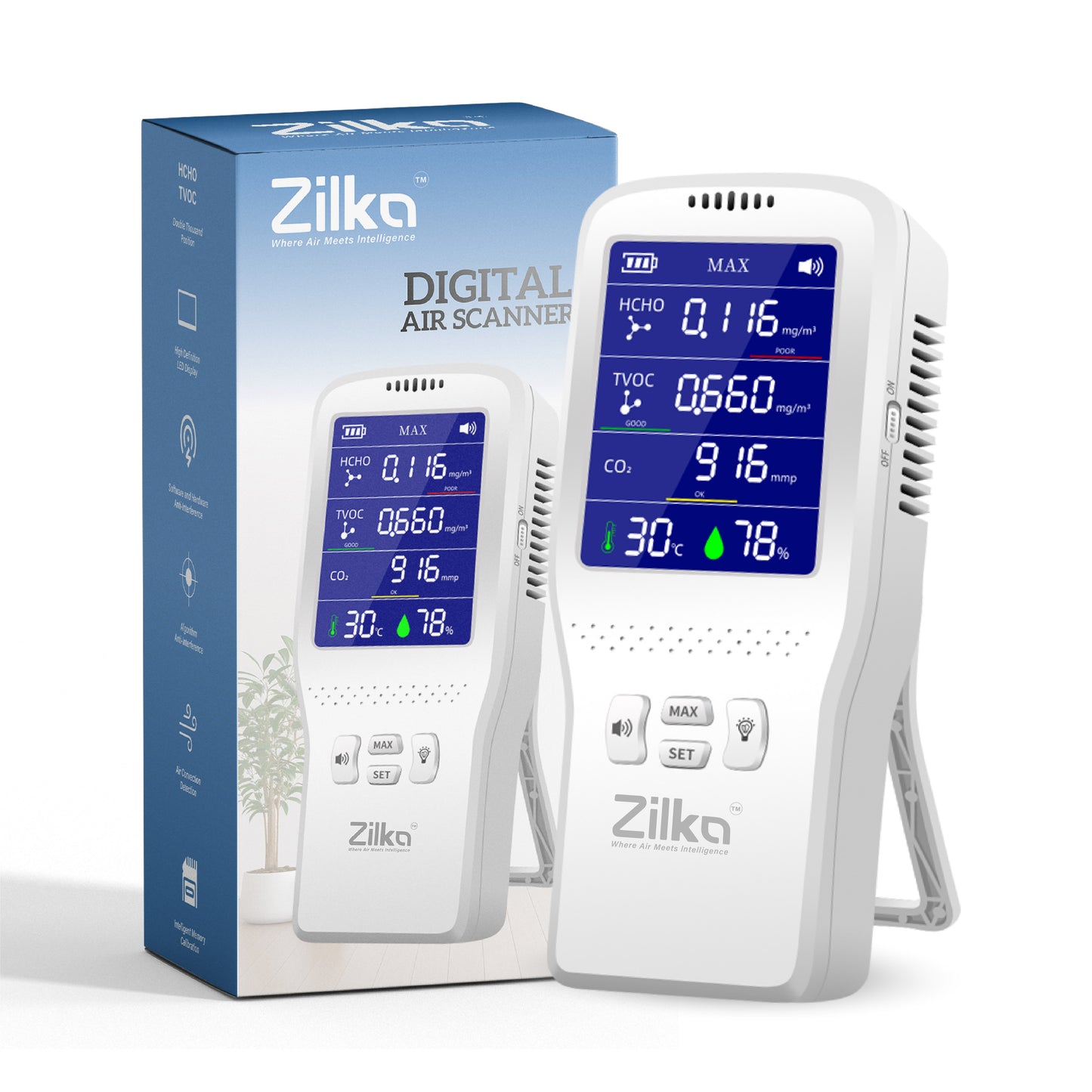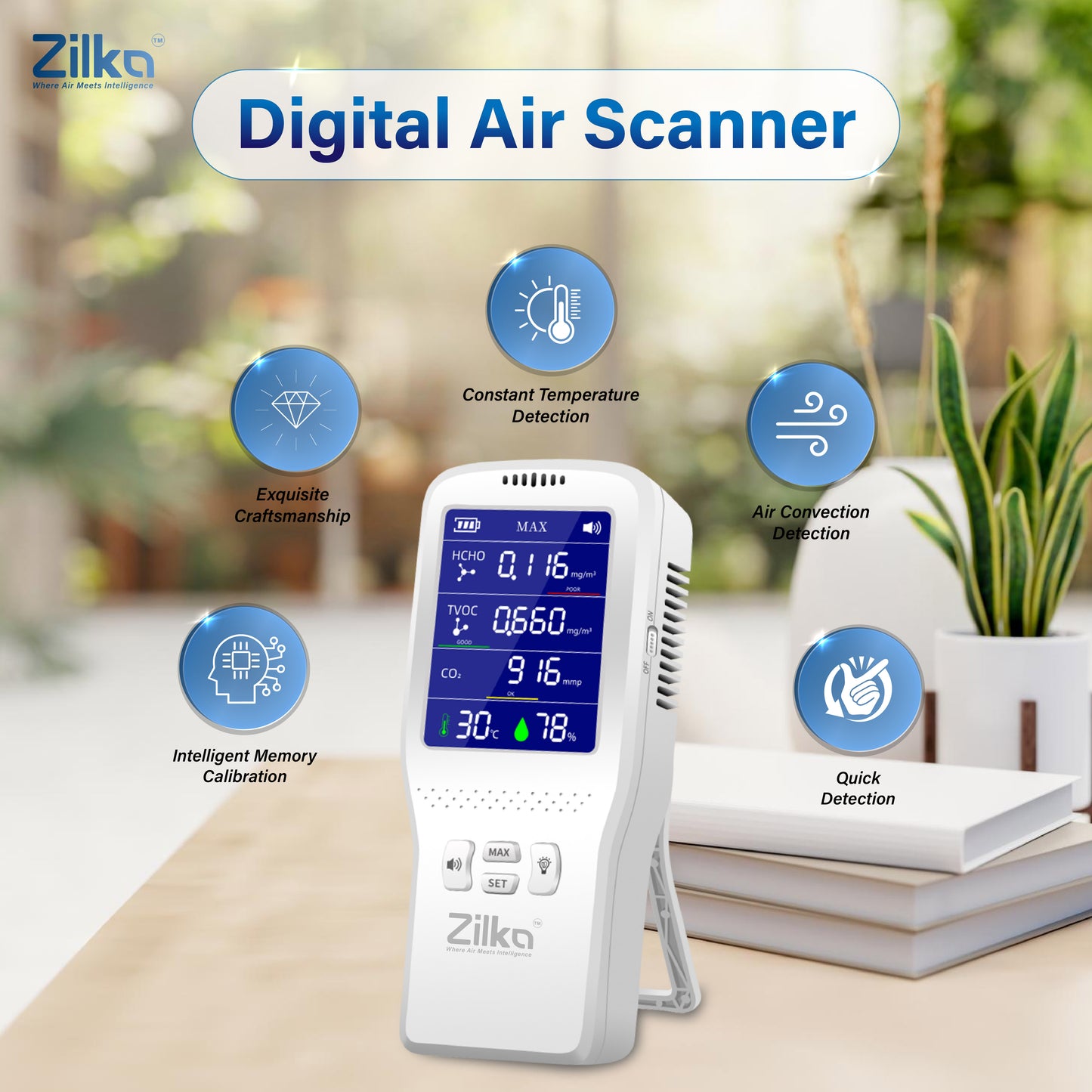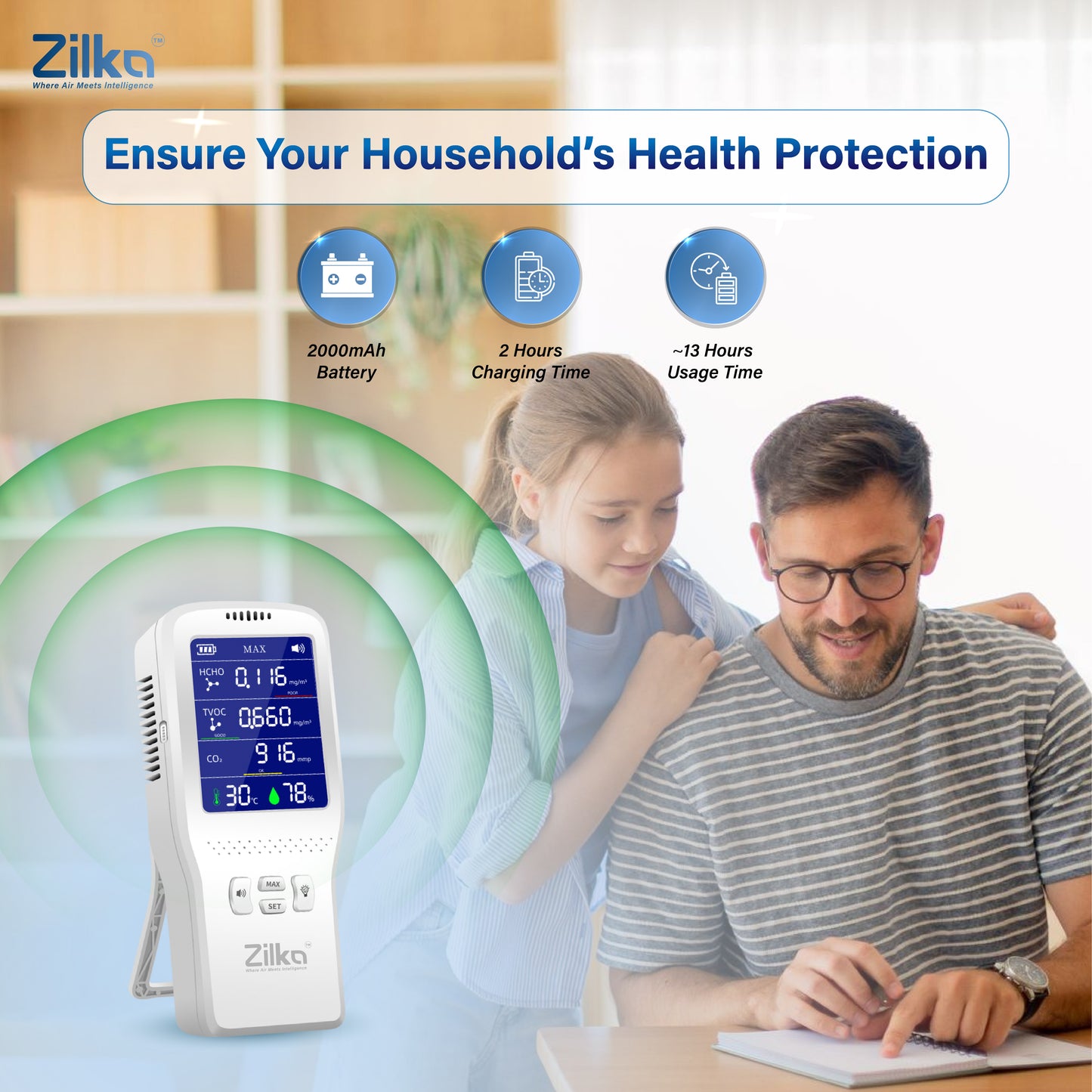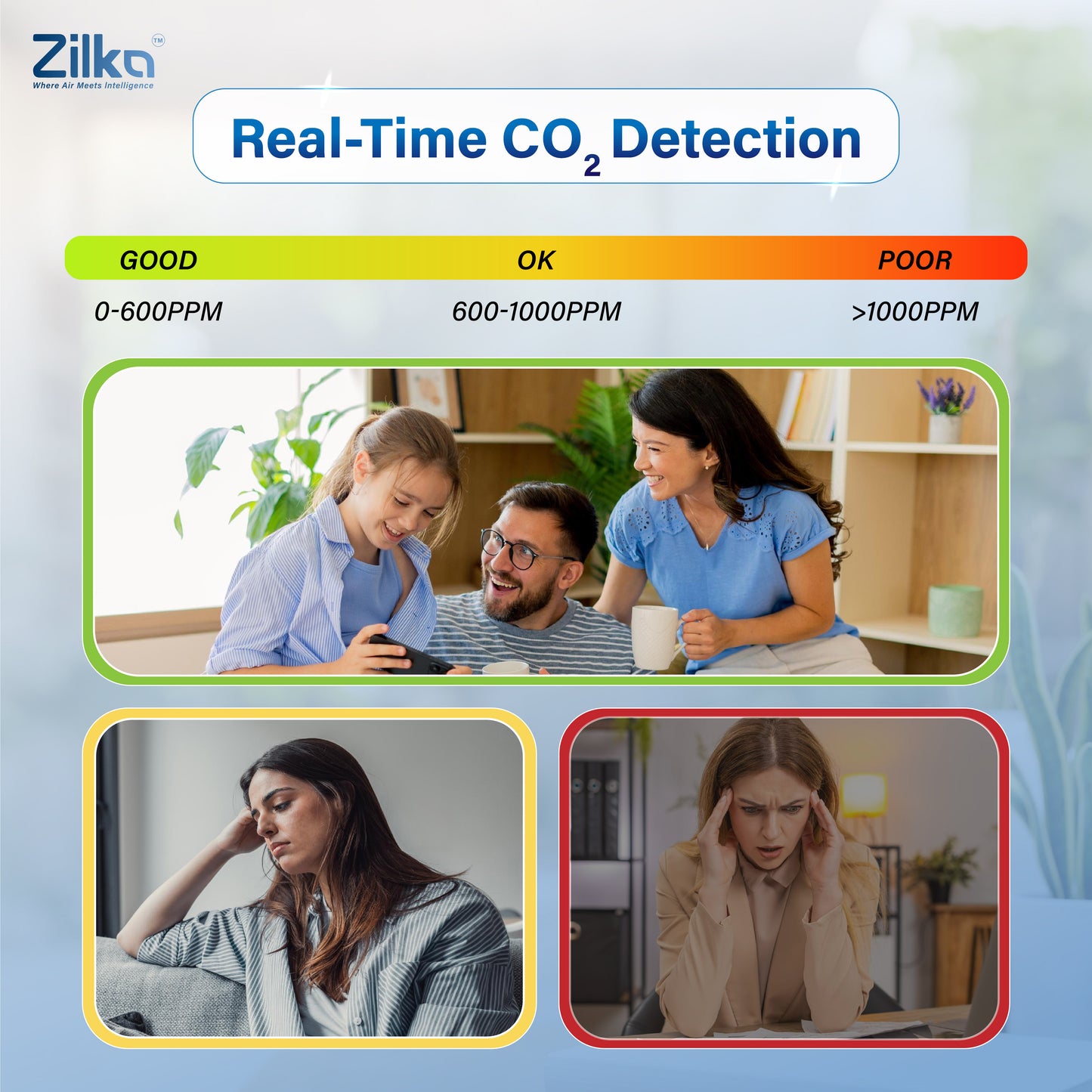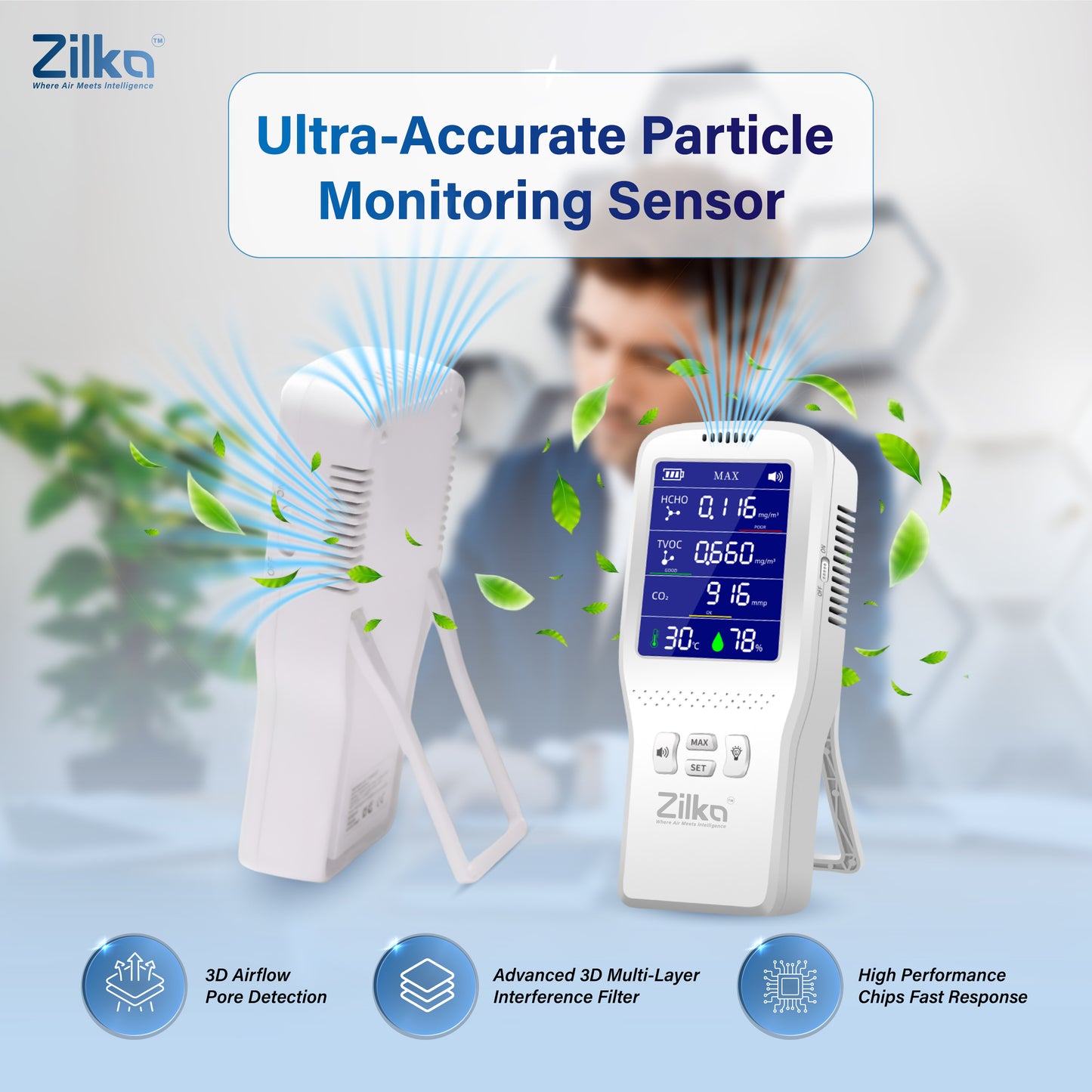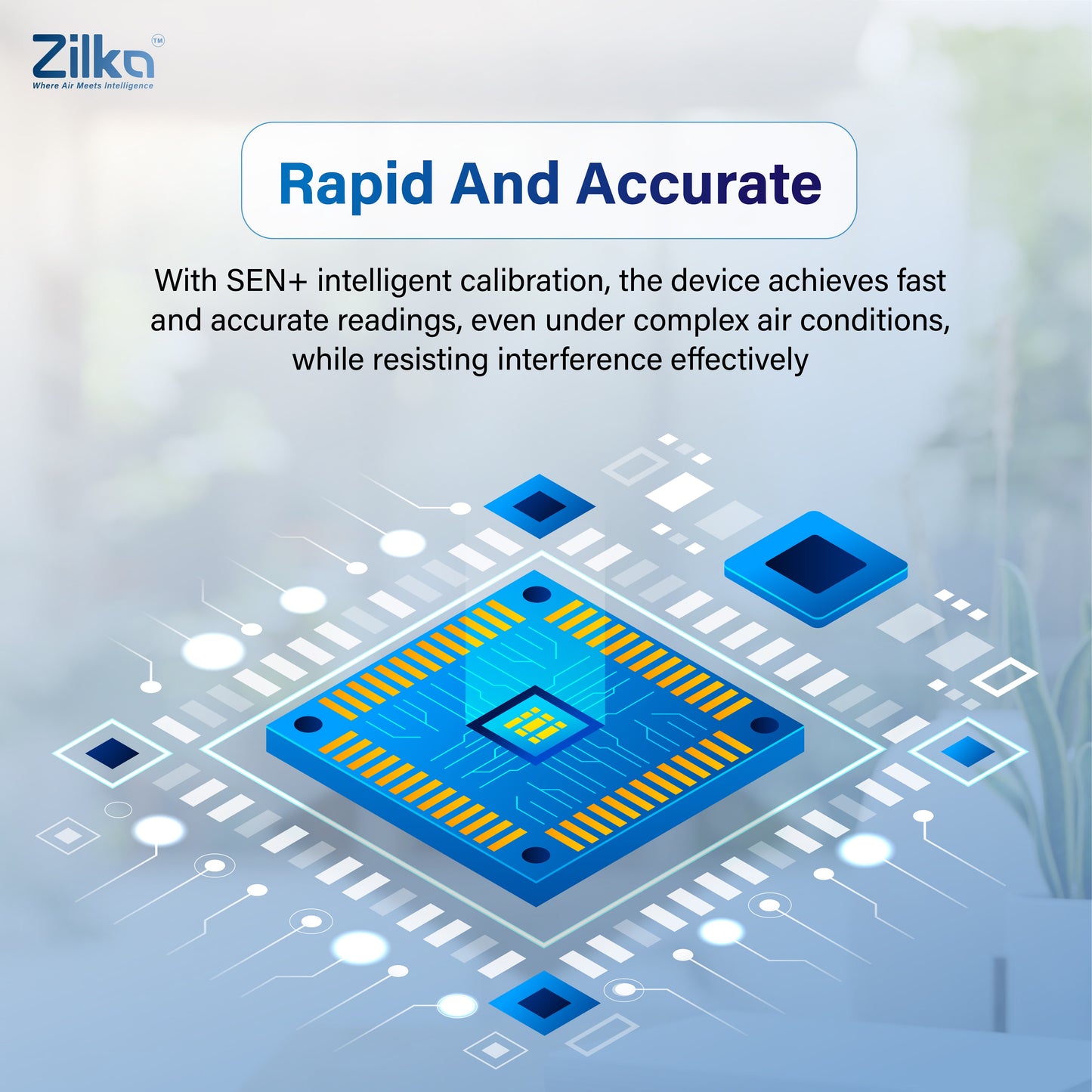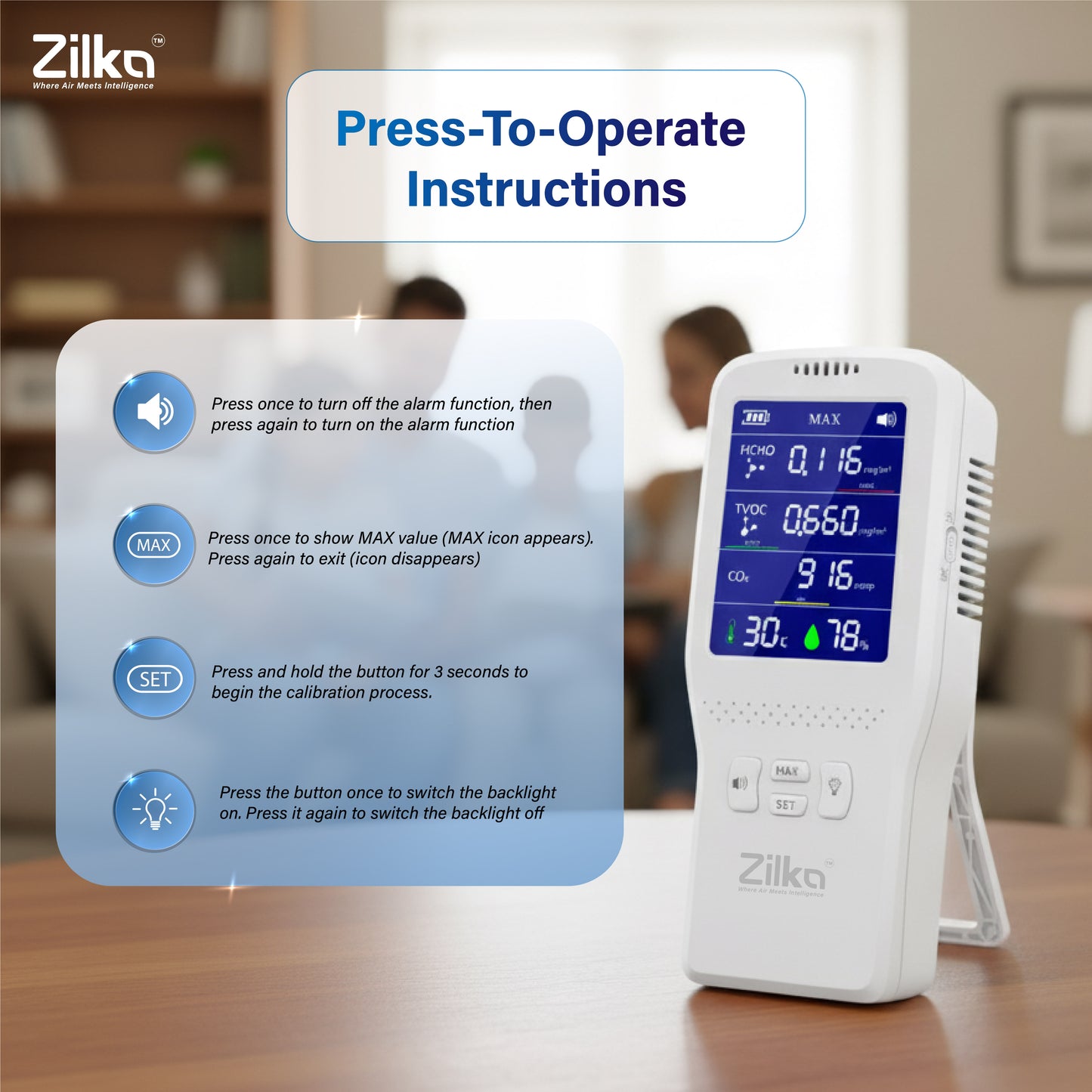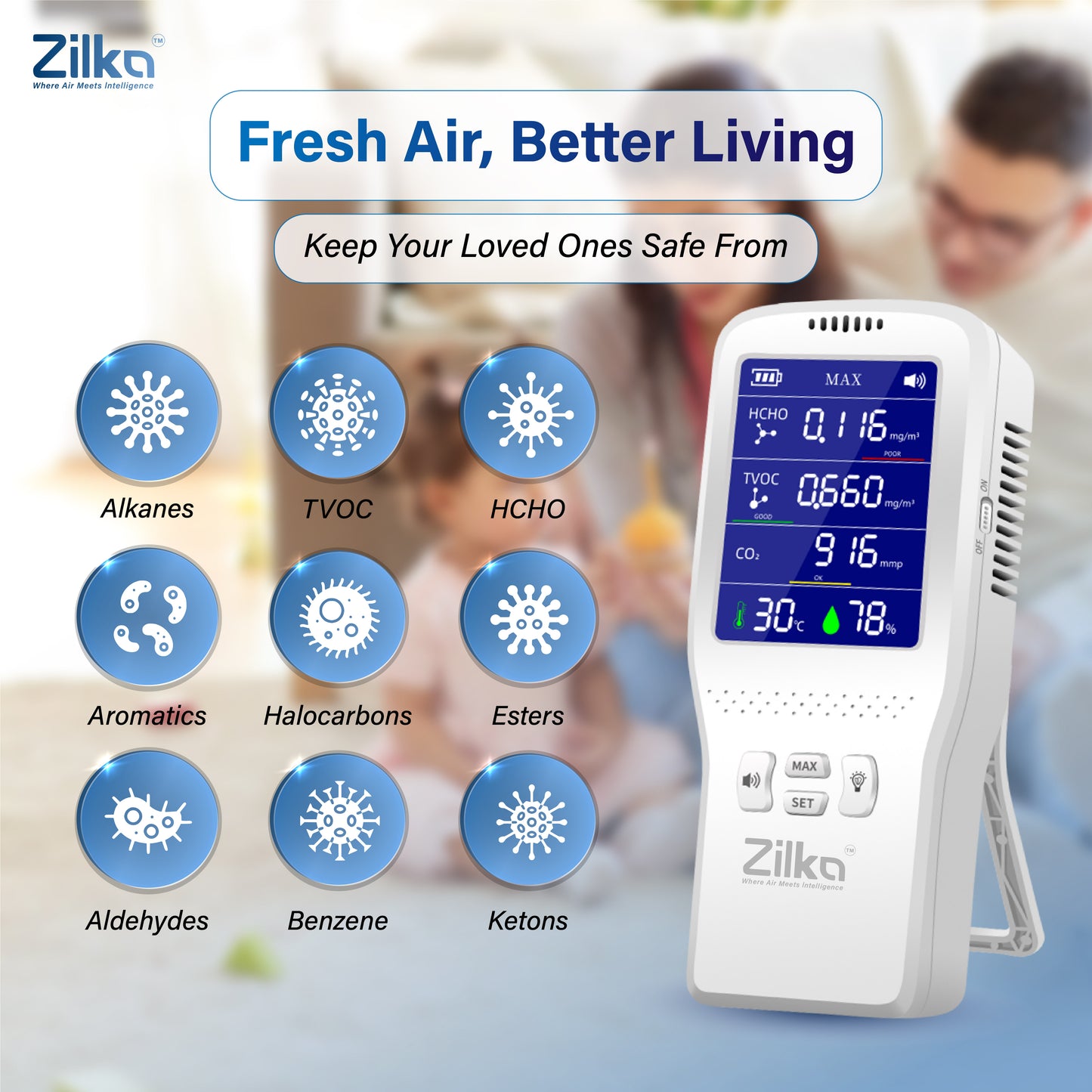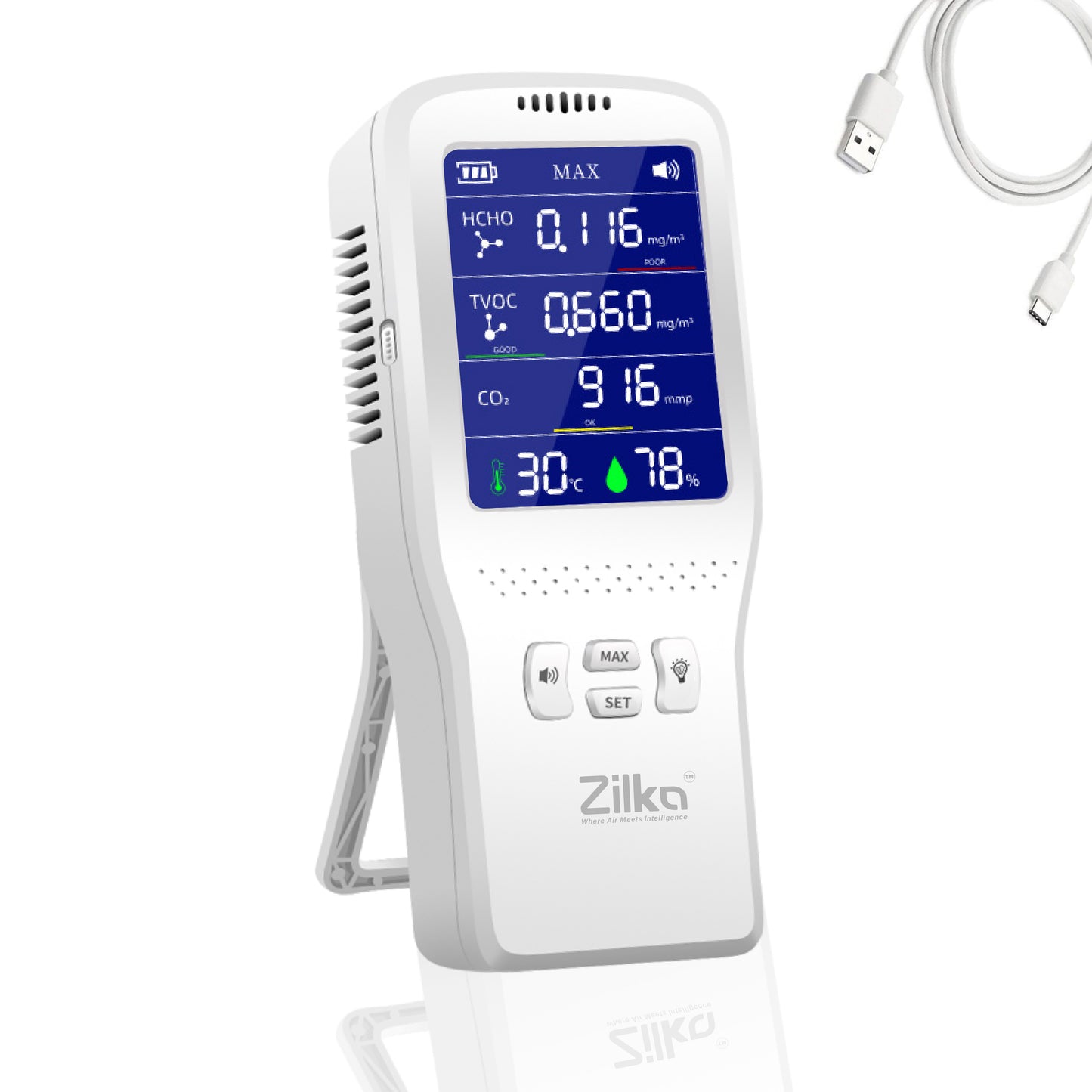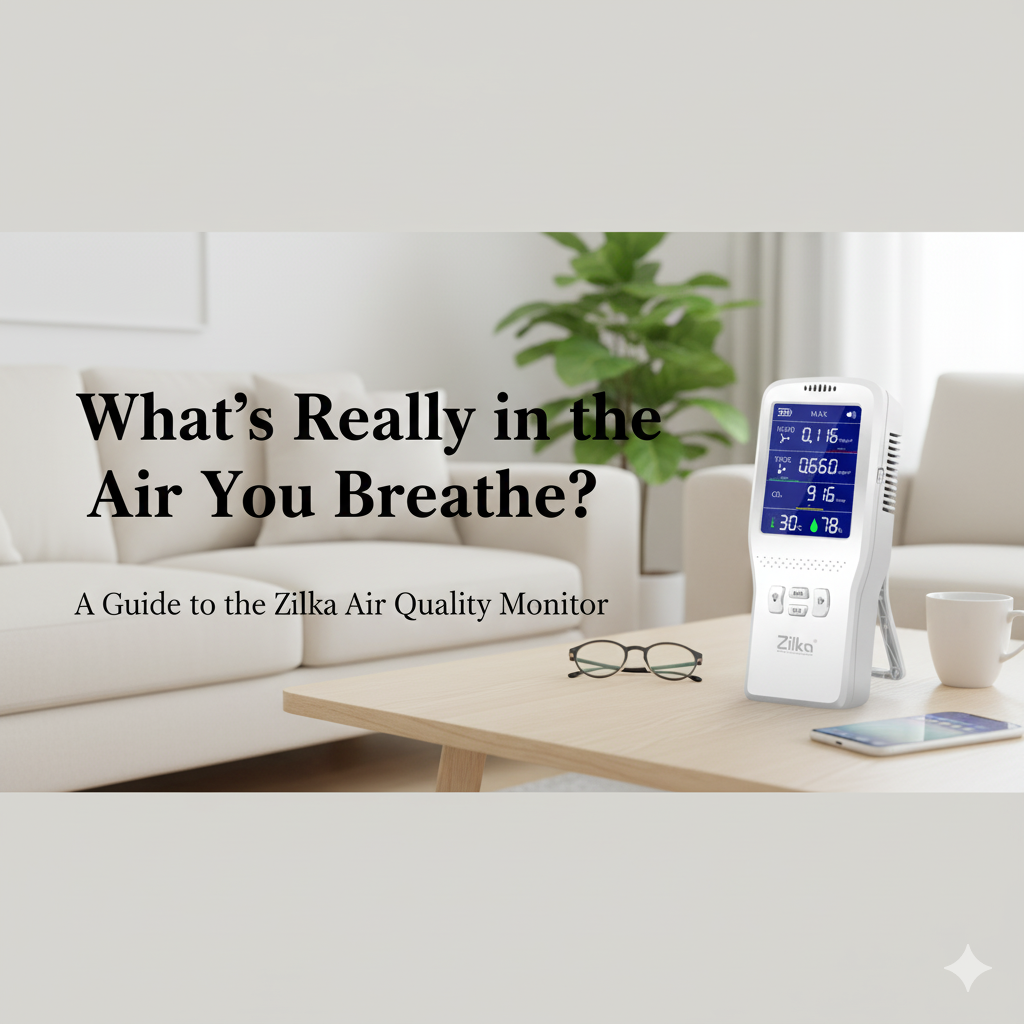
What's Really in the Air You Breathe? A Guide to Indoor Air Quality Monitors
We spend roughly 90% of our lives indoors – at home, at work, or in other buildings. We carefully choose what we eat, what we drink, and even what we put on our skin. But how much thought do we give to something just as vital: the air we breathe every single second?
The truth is, the air inside our homes can often be more polluted than the air outside. Sounds alarming, right? It’s not meant to scare you, but to empower you with knowledge. Because what you can't see, you can measure. And what you can measure, you can improve.
Enter the indoor air quality (IAQ) monitor – your personal, invisible air detective.
The Unseen Invaders: Why Your Indoor Air Might Be a Problem
Before we dive into how IAQ monitors work, let's understand why they're becoming an essential home gadget. Many everyday activities and household items contribute to indoor air pollution:
-
Building Materials & Furnishings: Volatile Organic Compounds (VOCs) can off-gas from paints, varnishes, flooring, and even new furniture.
-
Cleaning Products: Many common cleaners release harsh chemicals into the air.
-
Cooking & Heating: Gas stoves, fireplaces, and even burning candles can release particulate matter (PM2.5), carbon monoxide (CO), and nitrogen dioxide (NO2).
-
Mold & Mildew: Excessive moisture can lead to mold growth, releasing spores that can cause respiratory issues.
-
Pets & Pests: Dander, dust mites, and their droppings are common allergens.
-
Outdoor Pollutants: Pollen, exhaust fumes, and industrial pollution can seep indoors.
-
Human Activity: Respiration and even just moving around can generate dust and increase CO2 levels.
The effects of poor indoor air quality can range from mild irritations like headaches, fatigue, and allergy symptoms to more serious, long-term health problems.
Your Invisible Air Detective: What an IAQ Monitor Does
An indoor air quality monitor is a device equipped with sensors that detect and measure various pollutants and parameters in your indoor environment. Think of it as giving you superpowers to see the invisible. While different models offer different capabilities, most modern IAQ monitors can track:
-
Particulate Matter (PM2.5 & PM10): These are tiny airborne particles, like dust, pollen, pet dander, smoke, and industrial emissions. PM2.5 (particles smaller than 2.5 micrometers) is particularly concerning as it can deeply penetrate your lungs and even enter your bloodstream.
-
Volatile Organic Compounds (VOCs): These are gases emitted from certain solids or liquids. Common sources include paints, cleaning supplies, glues, permanent markers, and even new cars. High levels can cause eye, nose, and throat irritation, headaches, and nausea.
-
Carbon Dioxide (CO2): While naturally present, high levels of CO2 indoors can indicate poor ventilation. Elevated CO2 can lead to drowsiness, poor concentration, and headaches.
-
Carbon Monoxide (CO): A colorless, odorless, and highly toxic gas produced by incomplete combustion, often from faulty furnaces, gas stoves, or fireplaces. This is a crucial safety monitor.
-
Temperature & Humidity: While not pollutants themselves, these factors significantly influence the growth of mold, dust mites, and the release of VOCs. Maintaining optimal levels (usually 40-60% humidity) is key.
Some advanced monitors might also detect formaldehyde, radon, or specific allergens.
How an IAQ Monitor Helps You Breathe Easier
Knowing what's in your air is the first step towards a healthier home. Here’s how an IAQ monitor empowers you:
-
Identifies Problem Areas: Pinpoint which rooms or activities are contributing most to poor air quality. Is it your newly painted nursery? Your frequently used kitchen?
-
Validates Ventilation Efforts: See if opening windows, running an exhaust fan, or using an air purifier is actually making a difference.
-
Monitors Appliance Safety: Ensures your combustion appliances (furnace, water heater, gas stove) aren't leaking dangerous gases like carbon monoxide.
-
Optimizes Humidity: Helps you maintain ideal humidity levels to deter mold growth and dust mites.
-
Educates and Empowers: Gain a deeper understanding of your home environment and take proactive steps to improve it, rather than just reacting to symptoms.
Choosing Your Air Detective: What to Look For
When selecting an IAQ monitor, consider these factors:
-
Sensors: Which pollutants do you want to track? PM2.5, VOCs, CO2, and CO are excellent starting points.
-
Accuracy: Read reviews and look for reputable brands.
-
Connectivity: Many monitors offer app integration, allowing you to view data, receive alerts, and track trends on your smartphone.
-
Display: Do you prefer a simple on-device display or rely solely on an app?
-
Portability: Do you need to move it between rooms, or will it stay in one place?
-
Cost: Prices vary widely based on features and sensor quality.
Taking Action: What to Do with Your Data
Once you have your IAQ monitor, the real work begins. If your readings consistently show high levels of pollutants, here are some general steps:
-
Ventilate: Open windows and doors regularly, especially when cooking or cleaning. Use exhaust fans.
-
Source Control: Identify and reduce sources of pollution. Use low-VOC products, avoid air fresheners, and ensure combustion appliances are well-maintained.
-
Air Purification: Consider a high-quality air purifier with HEPA and activated carbon filters for PM2.5 and VOCs.
-
Humidity Control: Use dehumidifiers or humidifiers as needed to keep levels between 40-60%.
-
Regular Cleaning: Dust and vacuum frequently with a HEPA-filter vacuum.
The air we breathe profoundly impacts our well-being. By investing in an indoor air quality monitor, you're not just buying a gadget; you're investing in a clearer picture of your home environment and, ultimately, in the health of yourself and your loved ones. Start your journey to breathing easier today.


